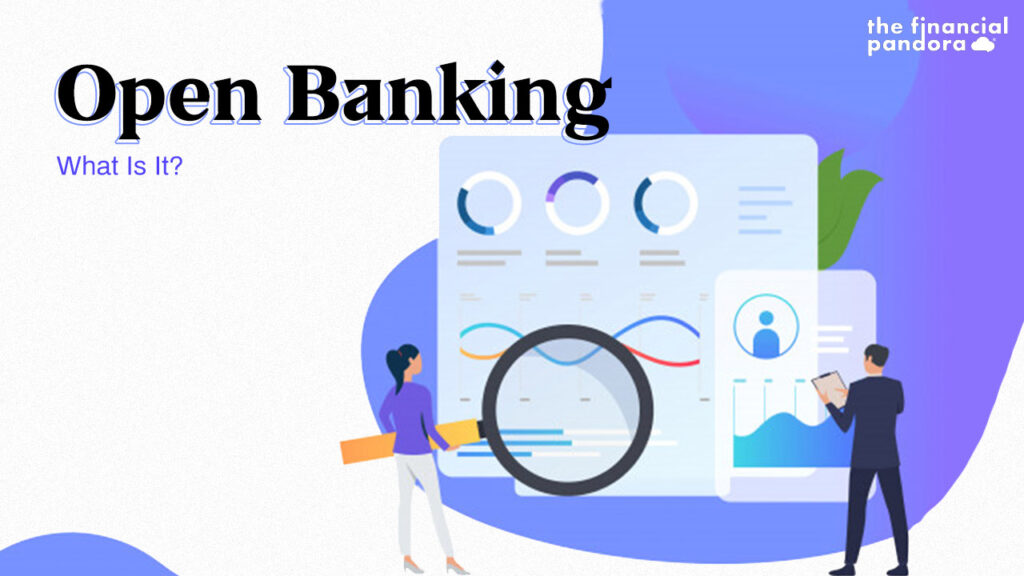Open banking is also known as “open bank data.” Open banking is a banking practice that provides third-party financial service providers open access to consumer banking, transaction, and other financial data from banks and non-bank financial institutions through the use of application programming interfaces (APIs)*. Open banking will allow the networking of accounts and data across institutions for use by consumers, financial institutions, and third-party service providers (TPPs).
(*An API, also known as an “application programming interface,” is a group of tools and protocols used to build software and applications. In terms of banking, APIs allow programming experts to create applications that help financial institutions exchange data with third-party financial technology organizations).
Open Banking is a brand new, secure way for consumers including small businesses to share information, allowing new and existing companies to offer super-fast payment methods and innovative banking products. It has the power to revolutionise the way we move, manage and make more of our money.
Under open banking, banks allow access and control of customers personal and financial data to third-party service providers, which are typically tech startups and online financial service vendors. Customers are normally required to grant some kind of consent to let the bank allow such access, such as checking a box on a terms-of-service screen in an online app. Third-party providers APIs can then use the customer’s shared data (and data about the customer’s financial counterparties). Uses might include comparing the customer’s accounts and transaction history to a range of financial service options, aggregating data across participating financial institutions and customers to create marketing profiles, or making new transactions and account changes on the customer’s behalf.
There are too many Open Banking initiatives to list them all, and they cross several dimensions, including implementation timelines; the range of products and services; and the type of institutions and third parties in scope. However, they all fall broadly into one of two categories: market-driven or regulatory-driven.
Market-driven
A number of countries, including India, Japan, Singapore, and South Korea, do not currently have formal or compulsory Open Banking regimes, but their policy makers are introducing a range of measures to promote and accelerate the take-up of data sharing frameworks in banking. In Singapore, MAS and The Association of Banks have published an API Playbook to support data exchange and communication between banks and FinTechs. In Japan, the FSA has established an authorisation process for TPPs, introduced an obligation for banks to publish their Open APIs policies, and encouraged banks to contract with at least one TPP by 2020. The majority of Japanese banks are taking this regulatory encouragement very seriously and are on track to fulfil the 2020 deadline.
Regulatory-driven
Outside the EU, two major jurisdictions have opted for a regulatory-driven approach: Hong Kong and Australia.
The Hong Kong Monetary Authority issued an Open API Framework in July 2018, setting out a four-phase approach for banks to implement Open APIs, starting with information sharing on products and services, and ending with sharing of transactional information and payments initiation services. Contrary to the EU approach however, while banks will be required to develop APIs, they will be able to restrict access to those TPPs with which they choose to collaborate.
But it is Australia that stands out for its innovative approach and scale of ambition. Like other Open Banking initiatives the Consumer Data Right Act (CDR), which is currently being finalised, will allow consumers to share their data with whichever authorised third parties they choose. The key difference however is that the CDR is a data policy initiative and not a financial services one. While it will apply to banks first, the CDR will subsequently apply to the energy and telecommunication sectors as well, and eventually it could be applied to any sector. The CDR is also the first Open Banking legislation to introduce the concept of ‘reciprocity’
Open Banking paved the way for a new generation of financial products, giving consumers more choice and control over their financial lives, and driving competition in the financial industry. With Open Banking, banks also have a unique opportunity to create products and services that solve corporates and SMEs’ pain points and improve their services. To do this, banks will need to do more than deliver their existing products better. They will need to enhance their digital and data analytics capabilities and develop an ecosystem of partners to improve personalisation and deliver more value-added services beyond simply meeting their financial needs. The advantages for corporates and SMEs can be enormous, particularly in areas including holistic finance management, account aggregation, creditworthiness assessments, cash flow and liquidity management, credit risk scoring, streamlined B2B payments, automated onboarding and identity verification, lending, account information, invoicing, tax digitalisation, cash forecasting, lending, accounting, payment tracking, request to pay etc. While Open Banking continues to gain traction all over the world, foundations are being laid for the next wave of financial innovation: Open Finance.
This post was written in collaboration with Asif Yahiya Sukri LLP. Asif Yahiya Sukri LLP provides unparalleled personalized financial services to a broad range of clients across different geographical locations. With a presence in the USA, India and the MENA region, they ensure that all of your financial decisions are made carefully and with your best interests in mind. They are innovators who understand what goes into building companies.
You can also reach out to them at info@aysasia.com
Follow Us @




